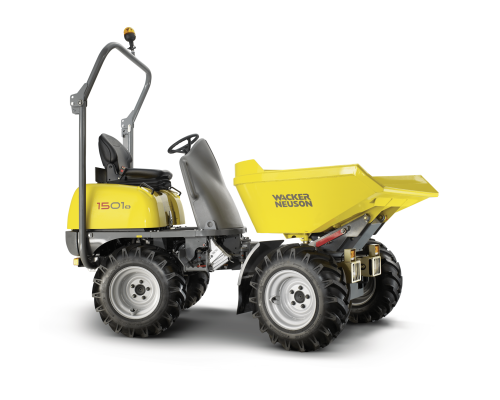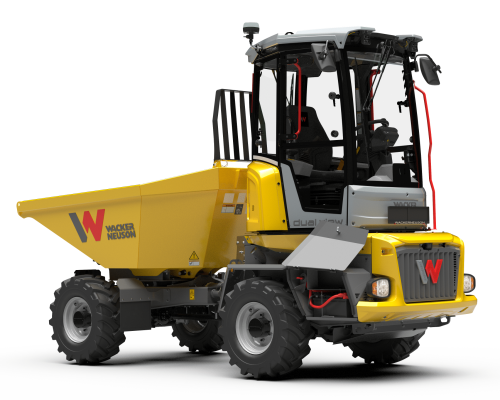Wacker Neuson Wheel Dumper DW40


Wheel Dumper DW40: Reliable, safer and durable for material handling
With modern engine technology, the wheel dumper fleet can reach a speed of 25 km/h with a total payload of four metric tons. In doing so, the operator can rely on very high safety standards: The skip and tilt monitoring warns the operator of an unsafe use of the machine, while the cameras to the front and rear, including a washing system, provide the surroundings on a large 7-inch display. These and many other safety features make the DW40 a partner on the construction site, which can prevent accidents and noticeably increase the operator’s level of comfort.
Media and Downloads
Features
Payload: 4,000 kg
Width: 1,780 MM
Weight: 2,640-2,950kg
Engine: Perkins
Engine Output: 48.9 hp
Travel Speed: 15.5 mp/h
Gradeability: 63%
Length: 4,269 mm
Width: 1,780 mm
Payload: 4,000 kg
Additional Information
Hill-Hold function
- The integrated hill-hold function prevents the machine from rolling back when at standstill, as soon as the foot is taken off the gas pedal.
- The machine is braked automatically and secured against rolling back.
Skip monitoring
- Skip monitoring takes over the control of the skip position before driving off and thus prevents consequential damage or accidents.
- Real-time checking of the skip position informs the operator if locking is incomplete and reduces travel speed to 13 km/h to avoid accidents.
- This minimizes the risk of damage or accidents to the machine and the surroundings.
Hydrostatic 4-wheel drive
- Just hop on and go: with the hydrostatic drive system, the operator can concentrate on his work without frequent gear shifting.
- A continuously constant tractive force from 0 to the maximum speed and a hydrostatic brake provide for a comfortable driving experience.
Seat belt monitoring with start release
- The seat belt monitoring system signals visually and acoustically if an attempt is made to start the machine when the operator is not wearing a seat belt. The additional start release prevents start-up in this case.
- The safety during operation is increased once again and improper starting is thus prevented.













